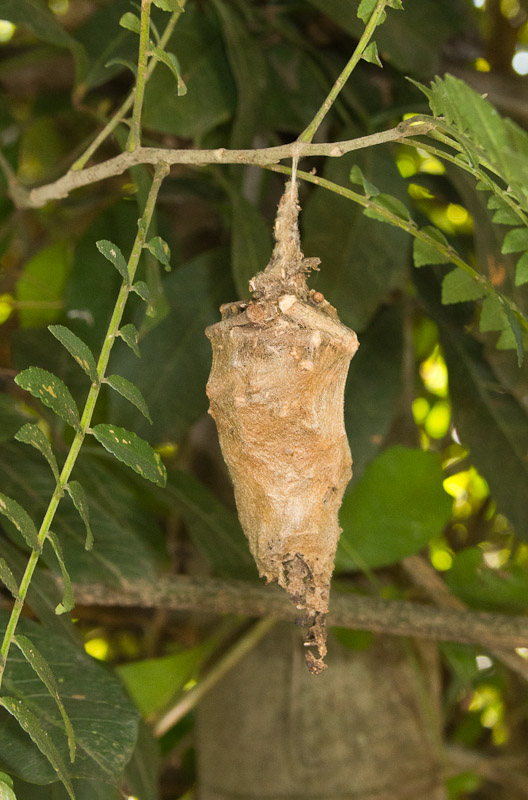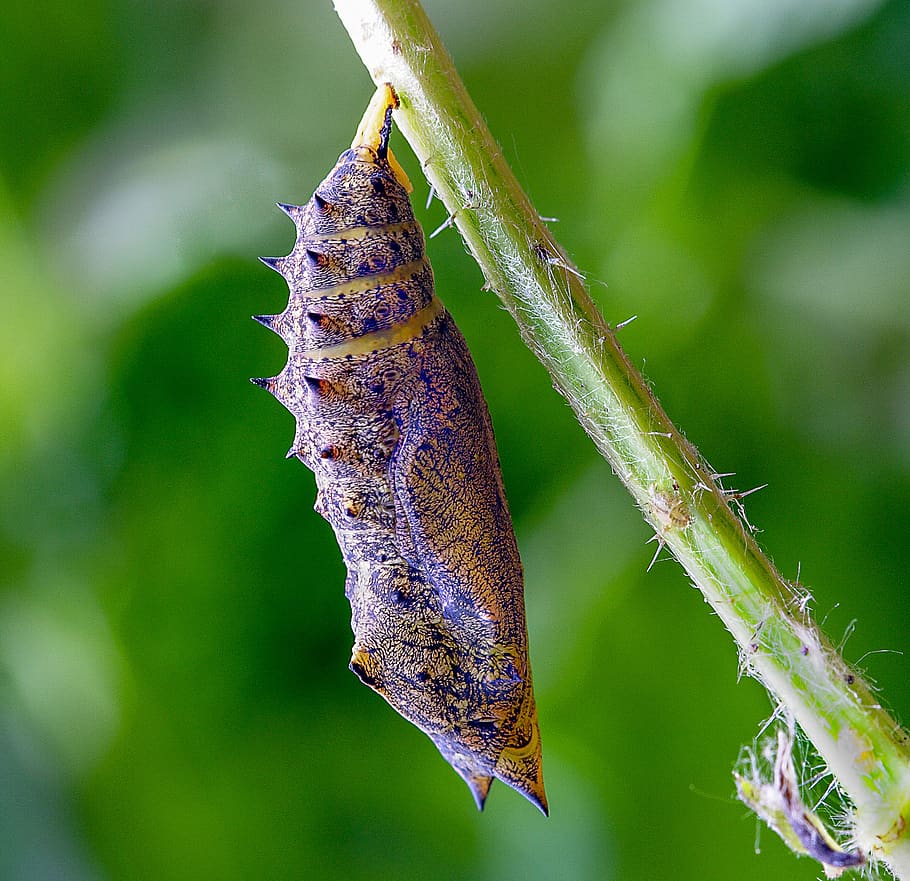
Chrysalis Butterfly Pupa, Chenille, Types Of Insects, Moth Caterpillar, Blue Morpho, Little
Blog science nature What is a Cocoon? Tell your neighbors. Many people probably think they know what a cocoon is. Well, the answer is actually more complex than it seems. Certain types of insects build cocoons, and cocoons are different from other types of insect casings.

What Does a Cocoon Look Like? Life Cycle of Cocoons
The Butterfly Chrysalis Butterflies are perhaps the most well-known cocoon-encasing insects. When butterflies transform from their larval caterpillar stage to the pupal stage, they will create hard, solid, hanging cocoons called chrysalises or chrysalides.

243 best Insects cocoons images on Pinterest Butterflies, Bugs and Insects and Moth cocoon
Kephra Beckett By James Gorman Feb. 19, 2019 White foam that looks a bit like frothy spit is a familiar sight to gardeners. It is sometimes called cuckoo spit because, like the call of the cuckoo,.

The cocoon of the Metallic Mechanitis Butterfly. insect gold Beautiful Bugs, Beautiful
Browse 4,031 insect cocoons photos and images available, or start a new search to explore more photos and images. Browse Getty Images' premium collection of high-quality, authentic Insect Cocoons stock photos, royalty-free images, and pictures. Insect Cocoons stock photos are available in a variety of sizes and formats to fit your needs.

pupa, cocoon, butterfly, chrysalis, insect, wildlife, metamorphosis, nature, transform, growth
Step 1: Take a clear picture. No matter how you proceed with your investigation, you'll need a clear picture of the insect in question to help with the identification. Descriptions alone aren't enough because everyone identifies colors and other attributes differently. A picture, in this case, is definitely worth more than a thousand words!

chrysalis Google Search Butterfly chrysalis, Butterfly cocoon, Butterfly
Lacewing eggs are almost imperceptibly small to the human eye and ingeniously designed to avoid being eaten by other predatory insects. An adult female lacewing attaches a white thread to a leaf (often on the underside). The thread extends outward into the air about 1/8″ and the tip houses a small white-colored egg.

Free Images nature, leaf, wildlife, green, insect, biology, bug, flora, fauna, invertebrate
The Grooviest Cocoons in the Insect Kingdom. Larvae of some paper wasp species use mysteriously fluorescent silk to weave the container in which they mature to adulthood. Researchers shining a UV.

Bagworm Cocoon Nature Closeups
The lepidopteran Saturniidae family of insects produces a wide variety of cocoons with unique characteristics. The Saturniidae and Bombycidae family, including B. mori and B. mandarina, belong to the same superfamily, Bombycoidea , but the characteristics of the cocoon are largely diversified between these two families.

Cocoon wrapped in leaves? Antheraea polyphemus
(from 'doll'; pupae) is the life stage of some insects undergoing transformation between immature and mature stages. Insects that go through a pupal stage are holometabolous: they go through four distinct stages in their life cycle, the stages thereof being egg, larva, pupa, and .

Cecropia moth cocoon. Very large cocoon, or chrysalis, of a saturnid moth, the C , AFFILIATE,
Cocoon. The cocoon is the protective covering around the pupae or chrysalis of some insects - especially moths. The cocoon is usually made from silk secreted and woven by the caterpillar/larvae before it pupates inside. Silk is arguably the most well known product from insects. Silk comes from the cocoon of silk moths.

Insect Cocoon Free Photo Download FreeImages
Nov 2, 2021 2 min read Chrysalis or Cocoon? Learn Who Uses What The transformation of a caterpillar into a butterfly or moth is one of the more amazing processes to witness. It's as if one creature becomes something else entirely. A monarch in a chrysalis. (Photo via Shutterstock)

pupa, cocoon, butterfly, chrysalis, insect, wildlife, metamorphosis, nature, transform, growth
Butterflies and moths are perhaps the most commonly known insects that build cocoons. Their larvae, which are caterpillars, are voracious eaters. Caterpillars spin silk, and this silk is used to form the cocoon for the pupal stage of development - the final stage before adulthood. Some moths, such as the clothes moth, may find their way into homes.

cocoon monarch Google Search Butterfly chrysalis, Butterfly metamorphosis, Butterfly pupa
Cocoon Last Updated on Thu, 16 Nov 2023 | Insect Species Frederick W. Stehr Michigan State University A cocoon is commonly believed to be the silken protective covering within which the caterpillars of many moths and a few butterflies pupate.

bug of the day Moth cocoon, found under the leaves when I … Flickr
What is a Cocoon? Many insects create a cocoon for protection during an early stage of development, called the pupal stage, in which they dramatically transform from an adolescent larva (such as a caterpillar) to their adult form (such as a butterfly). This is called metamorphosis.
.jpg)
FilePraying mantis cocoon (5585071032).jpg Wikimedia Commons
10. Red or yellow markings. 8 or more; No. One inch or more. 7, 13, 14, 15. Identify the creature you found with this quick and easy bug identification guide to commonly found insects, bugs, arthropods, and related creatures.

Cocoons Larva Larvae Insect · Free photo on Pixabay
Cocoons are protective enclosures created by the pupae of various insects, which include caterpillars, moths silkworms and ants. In the case of caterpillars, the cocoon period is the stage in its life cycles when it transforms into a butterfly.